Review: Nisi Filters - part 2 - The proof of the pudding
Having looked at the Nisi filter holder in the first part of the review it was time to get out with the camera and see how the filters performed in use. I should start by mentioning that I'm not really a pixel peeping type of photographer so if you're looking for a scientific test you're in the wrong place. What I am interested in is whether these filters will help me capture the images I want and the effect, good or bad, that the filters will have on my images.
The test started particularly well when I unwrapped, what for some reason I'd thought was a 0.9 (3stop) ND filter to discover to my delight it was actually a 3.0 (10 stop) ND filter which gave me more options and the chance to compare it with the Lee Big Stopper. This and the other filters I had at my disposal (0.9 soft and 0.9 reverse ND graduated filters) are all made from optical glass with an anti-reflective, waterproof coating and the filter details etched neatly along the edge while the 10 stop filter also has a foam gasket on the reverse to prevent light leaks during long exposures. Just like the holder, everything about the filters exude quality and I found myself looking forward to using them.
I took the filters out on several occasions to give them a good test in different conditions. I'd visualised stunning sunrises and sweeping clouds but the weather conditions had other ideas and the example images are more a case of making the best of it … the best laid plans and all that.
First up was a trip to Dovercourt beach on a cloudy afternoon to try out the 3.0 ND filter. Having settled on a composition I took a shot without any filters for reference and in this case the exposure captured all the information with no blown highlights or blocked shadows so there's perhaps an argument there for not needing filters at all here but lets be honest, the original image is a little dull.
Fitting the 0.9 soft grad to add a bit of drama to the sky I then checked my starting exposure, slotted in the ND filter and started the exposure in bulb mode. The filters slot snugly into the holder and the edges of the ND filter have been left clear of the rubber gasket to aid in this… all adding to that quality feel I keep going on about.
Straight out of the camera things were looking better already, the image was slightly underexposed so I'd guesstimate that the filter is slightly over 10 stops but a slight variation is not uncommon with extreme ND filters and my Lee Big Stopper is actually 11 stops. There's also a cool colour cast, which is something I'll look at a little closer in the second set of images but it's not something that bothers me especially in this case when the final processed image is mono.
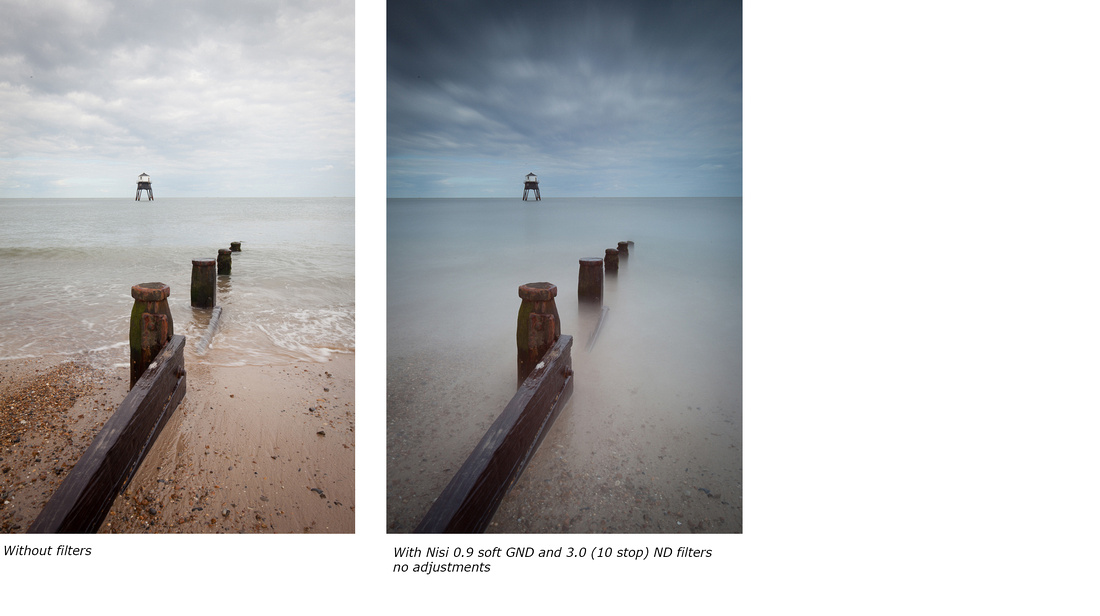

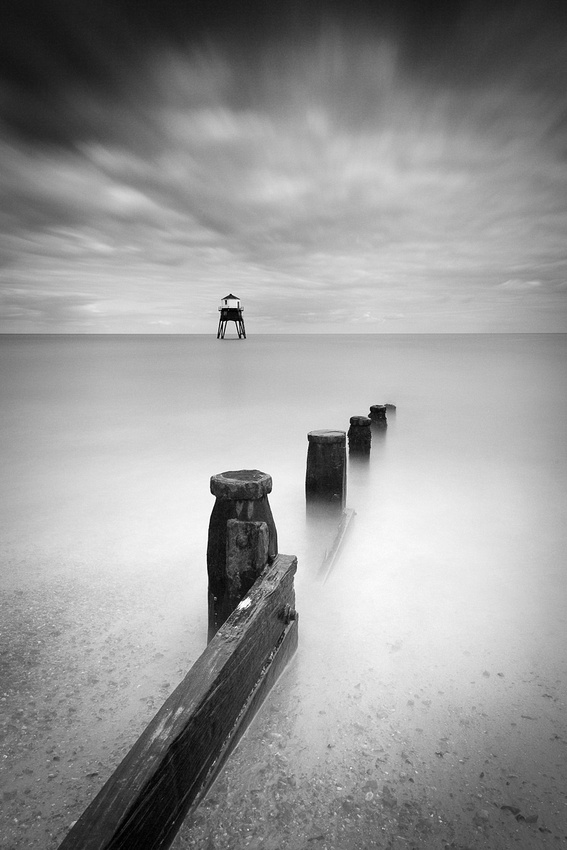

The second set of images are a little unorthodox. With waves crashing over the concrete groyne and washing down the beach, I really needed a 3 or 4 stop ND filter to capture the movement but as I only had a 10 stop filter which would have blurred the water completely I was going to have to improvise a bit. As you can see from the first image without filters, shutter speeds were too fast to capture any movement in the water. Using the same filter combination of 3 stop soft ND grad and 10 stop ND, I adjusted the aperture and ISO until it gave me a shutter speed that I was happy with (1.3 seconds in this case). It was something of a compromise as by using a larger aperture I've had to sacrifice some depth of field but I think the effect is worth it.
I mentioned earlier the colour cast found with the 10 stop filter and the four images below illustrate the nature of that colour cast. the first image is the test shot without filters (top left) then below that the unedited image with Nisi filters which clearly shows a cool colour cast. In the image next to that (bottom right) I've replaced the Nisi 10 stop filter with a Lee Big Stopper which shows a very similar (but slightly more magenta) colour cast. Although it's worth mentioning here, the cool colour cast isn't an issue for several reasons in my opinion. Firstly, as you can see from the image top right, setting the white balance to auto when processing the RAW file easily cures the problem. Secondly most of my long exposures are converted to mono anyway and finally I actually quite like the effect, which is why in the final image I've only reduced rather than removing the colour cast completely.
Moving on, the image quality with the filters was pretty impressive, images were suitably clear and sharp and I could see no reduction in image quality at all.
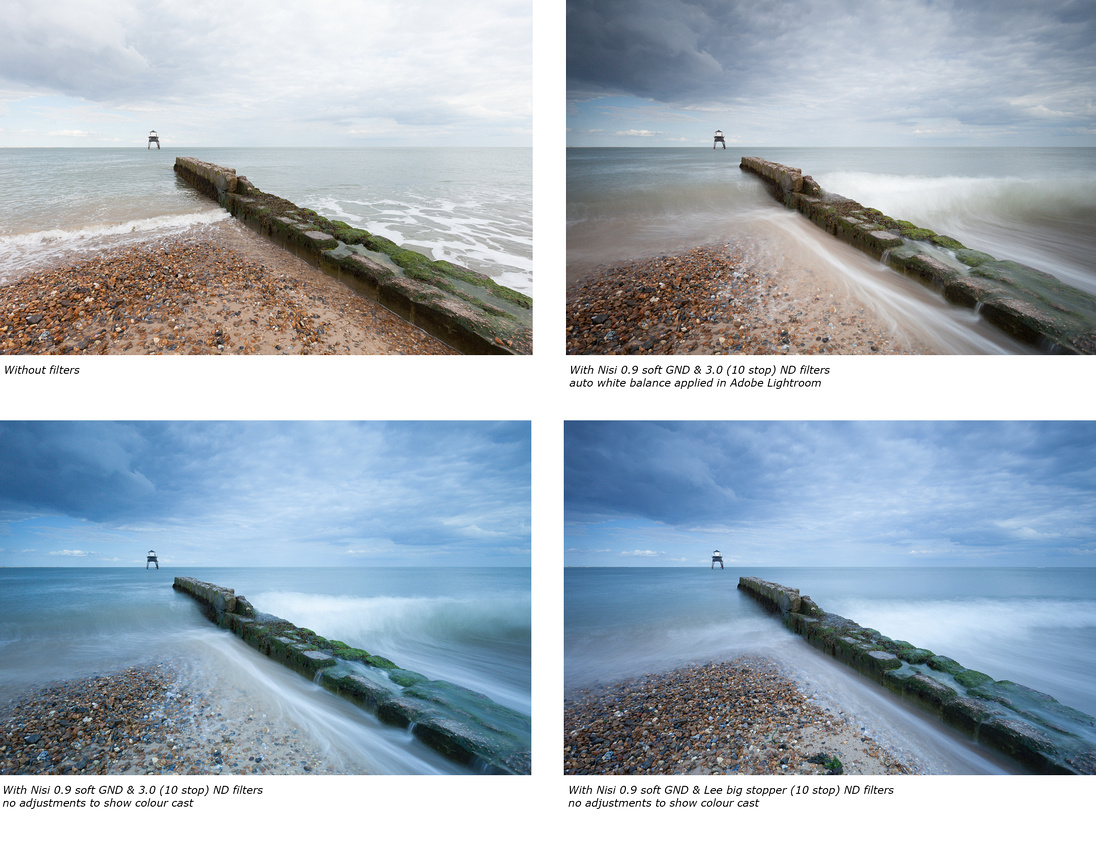

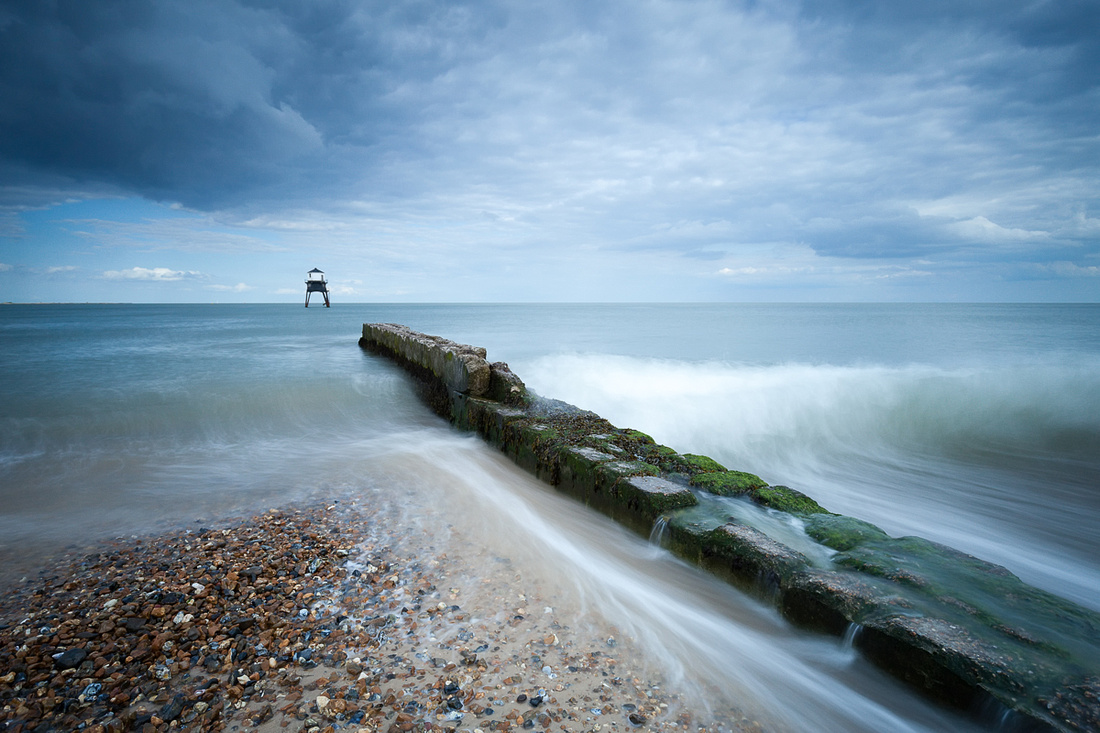

Next up, I wanted to test the reverse graduated ND filter by shooting into the sun at sunset so I headed to Hunstanton which has a lovely west facing beach (something of a rarity here on the east coast). If you are unfamiliar with reverse graduated filters, basically they have a hard transition like a normal hard edge graduated filter but the lower part of the graduation is darker than the top, ideal for holding back the sun when it is near the horizon without unnaturally darkening the sky above.
The review copy is a 3 stop filter, which as it's a fairly strong filter really needed a brighter sky than I ended up getting at Hunstanton but the results were still natural enough for me and the grad did an admiral job of holding back the brighter parts of the scene without making the rest too dark. Although I have tweaked the white balance in the final image to warm things up slightly, the colour neutrality of the filters seemed excellent, I was certainly unable to detect any colour cast.
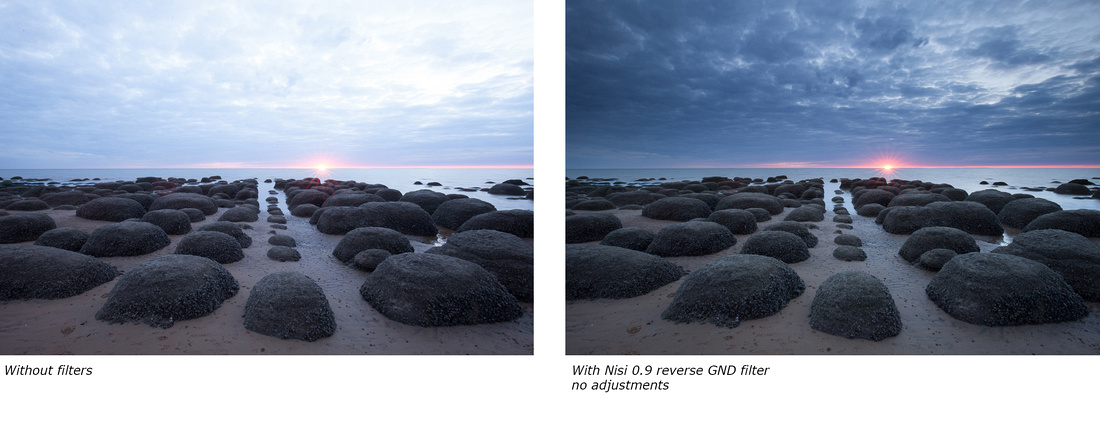

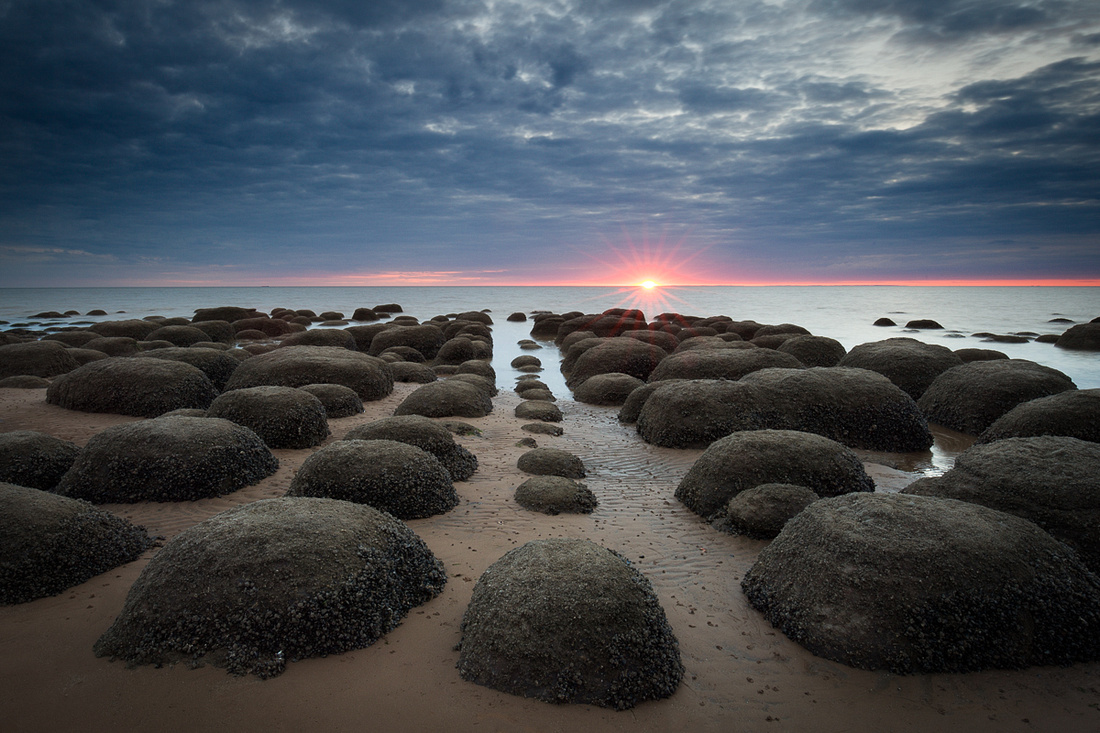

The final images were again testing the reverse grad, this time used with the circular polariser. As you can see from the test image with no filters, the sun was much stronger here and pretty much totally blew the sky out. Positioning the reverse grad until it was just over the water has balanced the exposure and rendered the sky very naturally. Again clarity and definition were very good and something else I noticed (or rather didn't notice) is the lack of lens flare in all of the images when I was shooting into the sun. Flare can be a real problem with this type of shot and I'm assuming the lack of it is down to the coating on the filter but as I didn't take comparison images with other filters I can't be 100% sure that a different filter would have had flare.
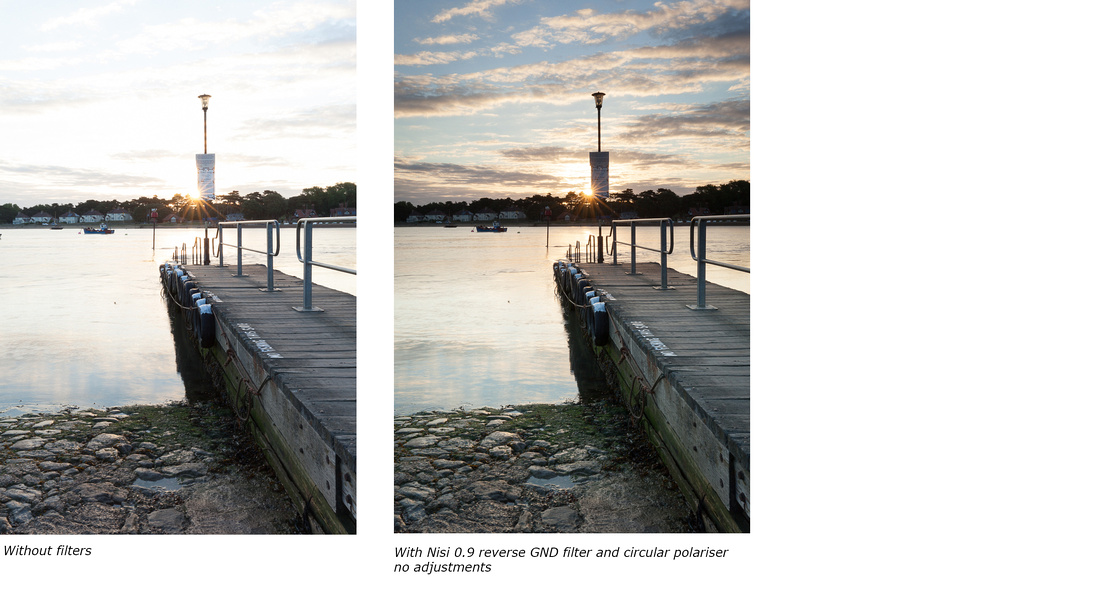

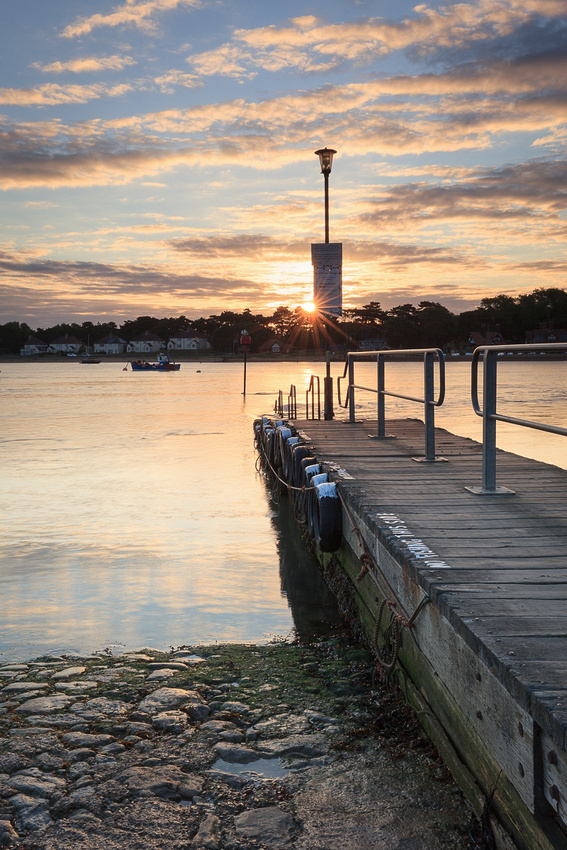

Conclusion
This is a well thought out, well made system and I was very impressed with the quality, that said, quality comes at a price and Nisi filters are currently more expensive than those of their competitors. As I mentioned in the first part of the review there are a few niggles, mainly that the cleverly designed filter holder can be somewhat fiddly in use and I find myself torn between the nifty CPL design of the Nisi and the simpler no nonsense holder used by other brands. However in my, admittedly unscientific, tests I found the filters to be optically as good if not better than anything else I've used and although I can't testify to how well they'd stand up to frequent use and abuse everything seems to be very well constructed. So, if you are looking to buy a filter system, Nisi should definitely be on your shortlist. Equally if you already have a 100mm system and are in need of some new filters the Nisi glass grads in particular are worth considering… I certainly will be.
Nisi filter review: part 1 - The ingredients
Comments
Excellent review really enjoyed reading this. It seems that there are more and more contenders to now challenge the market leaders (if there are market leaders now).
Have you seen the system coming from the USA.... Progrey? http://progreyusa.com/
By the time you have added shipping they work out much the same as the competition however.
Really enjoyed your site, great work!
Thank you
Thanks for reply.



